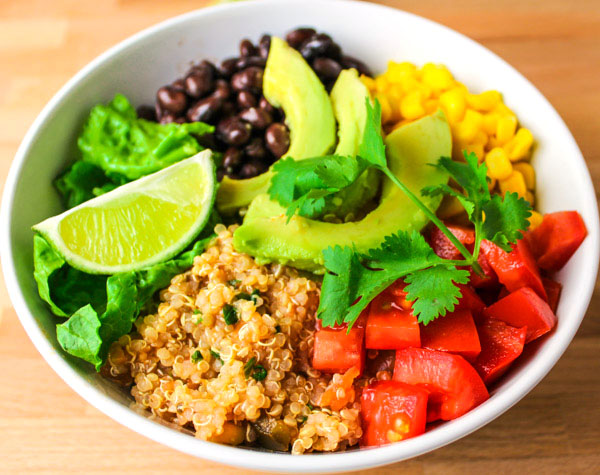Do you struggle to maintain a balanced diet for your child? Then keep your fears aside and let us put an end to your worries. A balanced diet since childhood and good nutrient intake in the family can lead to the development of a healthy adult in the future. However, it might be a difficult task for the parents to ensure that their kids prefer healthy foods over junk food. So, let us look at the types of foods suggested for a developing body and what tricks to avoid childhood obesity.
1. Made-Fast Breakfast!

rice top with delicious omelet
Breakfast is the most important meal of the day and this morning meal doesn’t have to be a struggle anymore! An example of a kid-friendly breakfast option could be a fruit basket which is basically a mixture of all healthy fruits with nutritious seeds or dry fruits and a pinch of spices to make it colorful and hence appealing. Dairy products are adored by kids of all age groups alike. Low-fat milk, yogurt, eggs, whole wheat bread etc. are actually a good source of protein and most parents ensure that at-least a glass of milk is consumed by the child in the morning. Hot cereal or Oatmeal with nuts on the top, Fruit smoothie to add a twist, and vegetable sandwich in salad dressing are some more yummy breakfast options your kid just can’t resist!
2. Get Set Lunch!

Jollof rice with chicken and salad
Children usually consume their lunch in their recess or school break. Teachers mostly encourage parents to pack a nutritious lunch for the students. The trick here is to make tiffin healthy without letting it look healthy because kids like to show off their tasty lunch box to their peers. This way they consume good food willingly. Some of the options include Cauliflower Pizza bites, Chicken Avocado Roll-Ups, Pizza Stuffed Zucchini, Lunch Kabobs, Pesto Chicken Veggie Meatballs, and many more such options that make kids consume veggies without actually having to consume them!
3. Finer Designer Dinner!

Quinoa burrito bowl
It’s time to feel amazing as you cook healthier dinner recipes for your family. Some examples of the mouth-watering dishes that look attractive and taste delicious and implicitly help parents promote nutritious dinners are Ground Beef & Pasta Skillet, Broccoli casserole, Vegetable stuffed potatoes, Cheddar cauliflower coup, Quinoa burrito bowl, salad tortilla bowls and so many more. Just think of healthy food items you want to integrate into your dish and creatively or rather cleverly add them in a way they look attractive, appealing, moulded in the shape of your kids’ favorite food, or maybe topped with delicious sauces or nuts. If this won’t make you the favorite parent then what will!
- A healthy nutrient intake can be promoted by regulating the number of calories and reducing junk foods or calorie-rich items in the house. Reasonable and adequate size of food portions is very important since overfeeding can a major cause of obesity in the child. To discourage cold-drinks or other sugary beverages, parents can promote fruit smoothies or shakes. If such healthy alternatives are readily available right in front of them, they tend to go for it in comparison to just explaining to them about the consequences of soft drink consumption. Baby steps like these can lead to successful results in the future. They will surely prove to be beneficial for the entire family and not just the toddler.
Obesity is actually much more common than you would think. The worldwide rates of obesity have increased significantly in the last couple of years.
A recent survey conducted by The National Center for Health Statistics projected the prevalence of obesity amongst youngsters of age groups between 6-19 as 18.5%. The highest of 20.6% was found in adolescents of ages between 12-19, followed by 18.4% of youngsters between the age group 6-11 and finally 13.9% of children between the ages of 2-5. The prevalence was higher among Non-Hispanic black individuals as compared to Non-Hispanic whites. The Government takes preventive measures such as Childhood Obesity Legislation, Obesity Policies is EU, and other Public Health Strategies to tackle the issue and eradicate its root causes.
